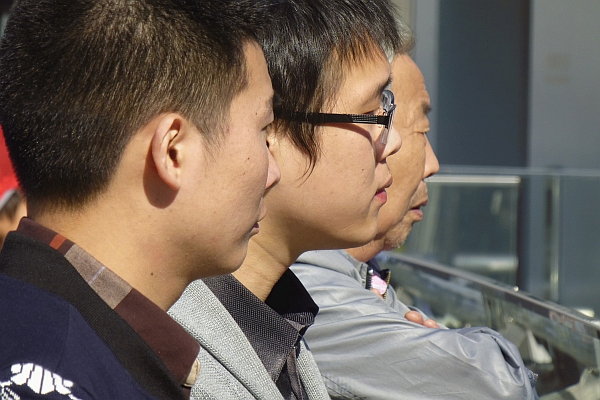Lesenswert: Diese Mega-Trends beeinflussen HR mehr als alles andere
Es ist wieder diese Zeit des Jahres, in der Rückblicke und vermeintliche Zukunftstrends Hochkonjunktur haben. Bei den Trends des Jahres entsteht allerdings unweigerlich der Eindruck, sie wären aus einer Lostrommel gezogen worden oder stammen direkt aus dem Marketingplan eines Konzerns.
Roboter als Jobkiller oder Diversity sind besonders oft als „Trendsetter“ vertreten. Ob das wirklich so ist, wird in den Trendprognosen nicht wirklich schlüssig begründet – eine Ausnahme davon macht allerdings Thomas A. Kochan, Professor of Management at the MIT Sloan School of Management. Hier ist seine lesenswerte Begründung der wichtigen Zukunftstrends, gefunden in der Irish Times.

Futurists are spending too much time debating whether “robots will eat all our jobs” or don’t worry, like technological revolutions that came before, enough new jobs will be created to replace the ones lost. It’s time to move on to figure out what needs to be done to update public policies, labour market institutions, and workplace practices to put technological changes to good use. I propose the following elements of a proactive strategy for doing so.
1. Train Before New Technologies Hit the Workplace.
The consensus recommendation of just about everyone studying changing technology is to retrain workers who are most at risk. Too often, however, the call is for retraining when workers are displaced. That’s too late. Instead we will need massive government and private sector investments in continuous training to ensure workers have the skills needed to engage new technologies before they appear at the workplace door.
2. Integrate Design of Technology and Redesign of Work by Engaging the Workforce.
Years of research tell us the best returns to technology are achieved when it is integrated with redesign of work practices, not by designing technology first and treating workforce issues as something to address later in the implementation process. Yet this lesson is often ignored, only to repeat the disastrous results of over automating. Witness the mess Elon Musk made of trying to create the most automated auto plant in the world. Only after he couldn’t get enough new cars out the door did he have to admit he underestimated the importance of the workforce.
3. Compensate and Assist those who are Displaced.
Some workers will lose their jobs and be displaced. They need to be compensated fairly and provided adjustment assistance to avoid creating another generation of “winners and losers.”
Globalisation: The wave of globalisation that has accelerated since China joined the World Trade Organization in 2001 has created an enormous gulf between winners and losers. Brexit, Trump, and the ensuing trade wars are manifestations of expanding trade without attending to its effects on workers and communities. But we can’t solve this problem with trade wars, isolationist strategies, or empty promises to bring back old-style factory jobs. The better option is to put advances in technology to work to build the next generation manufacturing industries, processes, and jobs, some of which can be produced locally in maker spaces using modern digital fabrication tools. These investments need to be combined with significant regional economic development, infrastructure, and education that offer the best chances of rebuilding communities hardest hit by the most recent wave of globalisation.
Worker Responses to Growing Inequality: A megatrend of the past several decades has been the decline in the share of income going to labour and increases in income inequality. This corresponded with, and in part happened because of declining union membership and power in the majority of OECD countries. But the quiet acquiescence of workers to their declining fortunes may be coming to an end. If so, we are in for a tumultuous period of protests and search for new ways for workers to build power to improve their conditions at work, whether that be in the gig world of Uber, the low wage world of McDonalds and Walmart or the high tech world of Google, Amazon, and others.
Will established labour unions adapt and find new ways to recruit and represent workers and counterbalance employer power? Maybe. If they don’t, either new ‘alt-labour’ organizations will rise out of the ashes of the current unions or it will be left to government policies to address the consequences of declining returns to labour.
That will mean turning to tax reforms and perhaps even some form of income guarantees to redistribute the gains from technological advance more equitably across the workforce. Most likely some combination will be needed of new forms of labour organizing, updating and strengthening labour and employment policies to ensure all who work, whether in standard employment relationships, contract, or independent contract relationships are covered by basic employment standards, and tax reforms that help shift returns from capital to labour.
Workforce Diversity Within & Across Borders: Population growth in Africa, India, and other less developed countries will be accompanied by slower growth and aging populations in Europe, Japan, China, and North America. This means cross-border migration will likely accelerate, leading either to greater tensions than those already present or to a new era of assimilation as immigrants are welcomed to help fill workforce shortages in advanced economies. Which will it be? Neither is preordained but it will take a sustained effort to rebuild respect for and ability to capture the value of diversity in our workplaces.
Climate Change: Climate change is probably the mother of all megatrends that will influence not just the future of work but the future of the planet. But this could be our ace in the hole-a potential avenue for addressing all of the other megatrends mentioned above. Investing in alternative energy sources and associated infrastructure could produce a large number of high quality jobs and help save the planet.
The bottom line is if we go beyond predicting or worrying about these megatrends and start focusing on strategies to address and manage them, we can shape a positive and rewarding future for work. The future of work, indeed, the future of our planet is in our hands.
Thomas A. Kochan is the George Maverick Bunker Professor of Management at the MIT Sloan School of Management,




